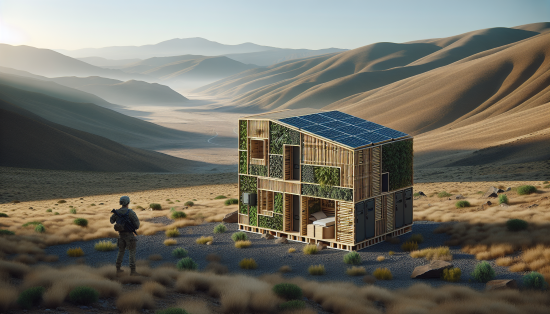Please welcome Sadie Smith, a first-time 21st Century Tech Blog contributor. She writes for a variety of newspapers and online media sites. Why did she choose this topic to share with readers? She recognized a growing need for innovative structures to meet a wide range of uses.
Humans have been innovators from the time we chose to move into shelters like caves thousands of years ago. As our species wandered we began to carry our accommodations with us. Indigenous people of the North American Great Plains invented tepees. On the Mongolian Steppe, the Yurt was born.
We have gone from tents made of animal pelts to structures made of sod, mud, bricks, steel, glass and concrete.
Sadie describes how military mobile necessity has inspired new types of shelters. I’ll let her tell the rest of the story and invite your comments and questions as always.
Fabric buildings and other innovative shelter technologies are transforming military operations, disaster relief and urban development. We are talking about shelters that are not only designed for safety and functionality but also for sustainability. Incorporating eco-friendly and energy-efficient materials and technologies, these shelter solutions are designed to minimize their environmental impact while addressing unique application needs.
The Military Is Changing Ideas About Civilian Structures
It may have started with the military need for temporary shelters, but innovation in temporary accommodations is having an impact on civilian use. These innovations include advancements in modular construction, energy systems, and materials first developed for deployment in military situations, now being adapted for use in urban housing and for other civilian purposes.
Armies have been using transportable accommodations for centuries, from pup to bell tents to British Nissan and American Quonset huts. Today, transportable living space is paying more attention to becoming energy efficient, sustainable, and multipurpose. This is leading to a revolution in materials, design, building and deployment.
What are the types of materials finding their way into modular, transportable structures?
- Bamboo provides high strength-to-weight ratios and can be grown quickly and harvested for prefabricated accommodations.
- Eco-friendly sustainable insulation uses materials such as cellulose from recycled paper, recycled denim cotton, hemp and wool.
- Recycled composites made from plastic and wood.
- Built-in renewable energy components such as solar panels, battery packs, integrated photovoltaics and portable wind turbines.
ULCANS (Ultra-Lightweight Camouflage Net System) is a structure designed to camouflage military equipment and personnel on battlefields. It is lightweight, portable, and difficult to detect by opposing militaries because of its near invisibility to visual, near-infrared, shortwave, thermal, and radar signature detection.
ULCANS come with integrated energy efficiencies such as advanced insulation and solar power. They can be used to house a tactical operations centre or for military housing. They provide internal temperature regulation to make them adaptable to more extreme climate conditions.
Non-Military Applications
Emergency Uses
Quick to deploy shelters have uses beyond military applications. Natural disasters can leave thousands displaced needing accommodation. Providing immediate, secure housing can be life-saving.
Fabric buildings are transportable and easy to assemble. They can become mobile field hospitals and provide shelters after extreme weather events. With solar panels, portable wind turbines and battery storage, these facilities can run off the grid. Rainwater harvesting technology and composting toilets are added features. Even used over the short term these deployable structures are easy to assemble and disassemble, can be repurposed, reduce waste and have a minimal environmental footprint.
Housing Uses
Shelter innovations once reserved for military or disaster relief use are now being integrated into urban planning. Cities are turning to modular and prefabricated housing around the world to address homelessness and housing shortages.
These structures are highly adaptable for studio-sized apartments, small homes, community housing projects, and mixed-use developments containing support services and small businesses.
Prefabricated shelters are particularly attractive because they can be customized to meet these various purposes and can be used in various climates. They can use the range of materials previously described to create an aesthetic appeal so that they don’t look like an army camp.
Sustainability Across All Sectors
Sustainability is at the core of these modern shelter solutions. Renewable materials and energy-efficient designs ensure they not only meet the needs of those who use them but also contribute to reducing their carbon footprint. Their portability can accommodate being off or on the grid. They can be deployed almost anywhere. Whether a military operation, disaster relief, or to meet a dire housing need, these modular, portable and fabric shelter systems represent a 21st-century take on meeting a basic human need.








